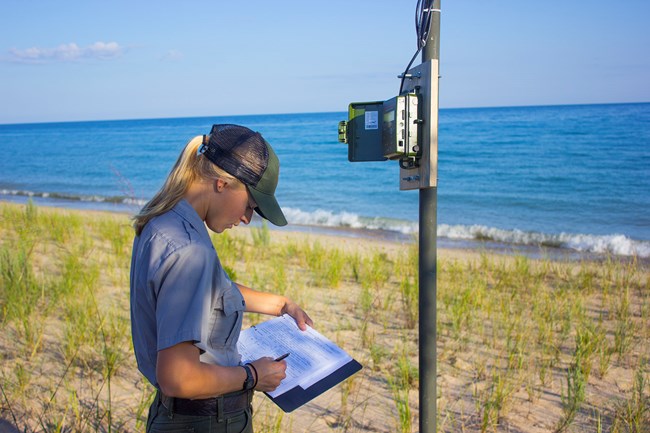
NPS
Bats nationwide are struggling to survive against the threats posed by climate change, habitat loss, windmill turbines, and a devastating disease called white-nose syndrome (WNS).
Based on published range maps and previous surveys, at least nine species of bats are known or likely to be present in the Great Lakes Network parks:
Big brown bat (Eptesicus fuscus)
Eastern red bat (Lasiurus borealis)
Evening bat (Nycticeius humeralis)
Hoary bat (Lasiurus cinereus)
Indiana bat (Myotis sodalis)
Little brown bat (Myotis lucifugus)
Northern long-eared bat (Myotis septentrionalis)
Silver-haired bat (Lasionycteris noctivagans)
Tri-colored bat (Perimyotis subflavus)
Long-term Monitoring
Then...
Bat monitoring in the Great Lakes Network parks began in 2015, supported by dedicated funds from the National Park Service to address WNS-related issues across the country. Full spectrum acoustic detectors capable of recording bats’ ultrasonic calls were set up in the network parks each year to monitor bat activity, identify what bat species were present, and determine seasonal activity patterns.
And now...
When this project began, the Great Lakes region was at the leading edge of the WNS spread. This monitoring program helped parks to document baseline data on their bat populations and to assess changes over time. In 2022, all parks completed at least six years of bat monitoring, marking the completion of network-supported data collection. Individual parks now manage their own bat monitoring programs.
Learn more...
National Park Service Bats page
Resource briefs provide a one- or two-page overview of the latest findings and what they mean. Monitoring reports are in-depth technical reports that include data analyses and possibly management recommendations.
Source: NPS DataStore Saved Search 3236. To search for additional information, visit the NPS DataStore.
Source: NPS DataStore Saved Search 3237. To search for additional information, visit the NPS DataStore.
Source: NPS DataStore Saved Search 5697. To search for additional information, visit the NPS DataStore.
Monitoring Protocol
Protocol documents detail precisely how monitoring is carried out.
Goodwin, K.R. 2020. Bat monitoring protocol for the Great Lakes Inventory and Monitoring Network: Version 1.0. Natural Resource Report. NPS/NRSS/GRD/NRR—2020/2126. National Park Service. Fort Collins, Colorado.
Last updated: September 19, 2024
